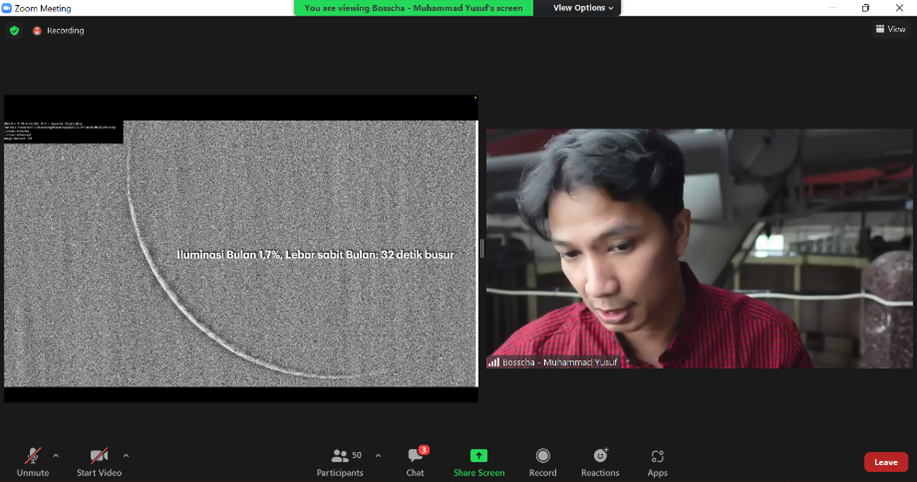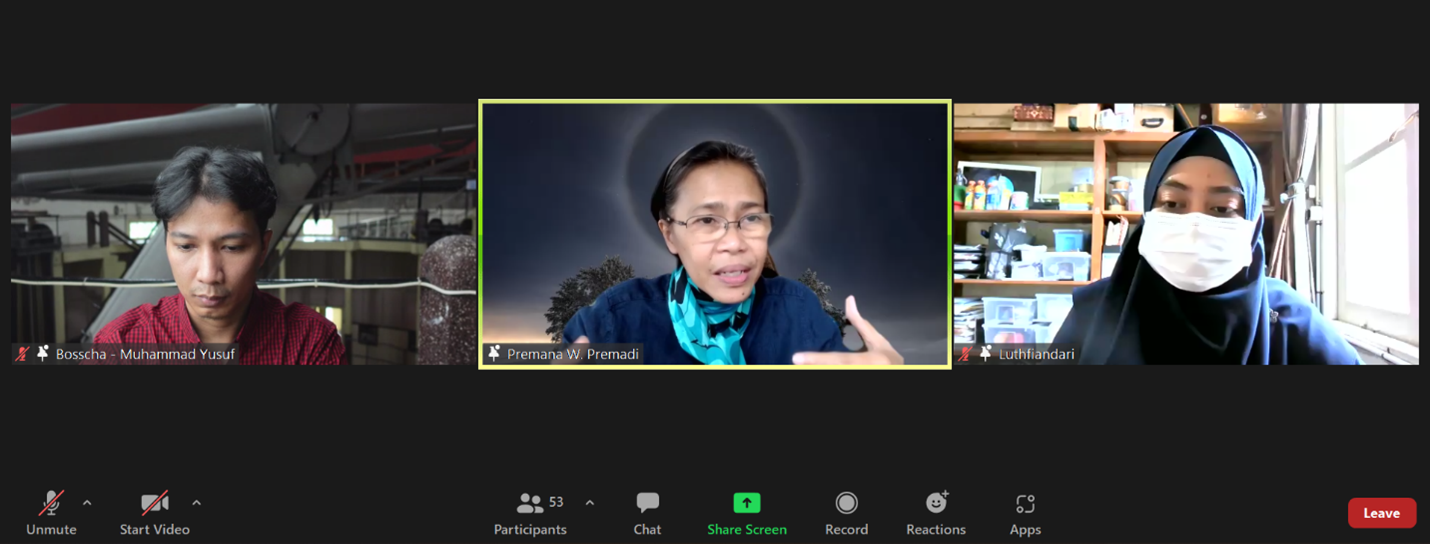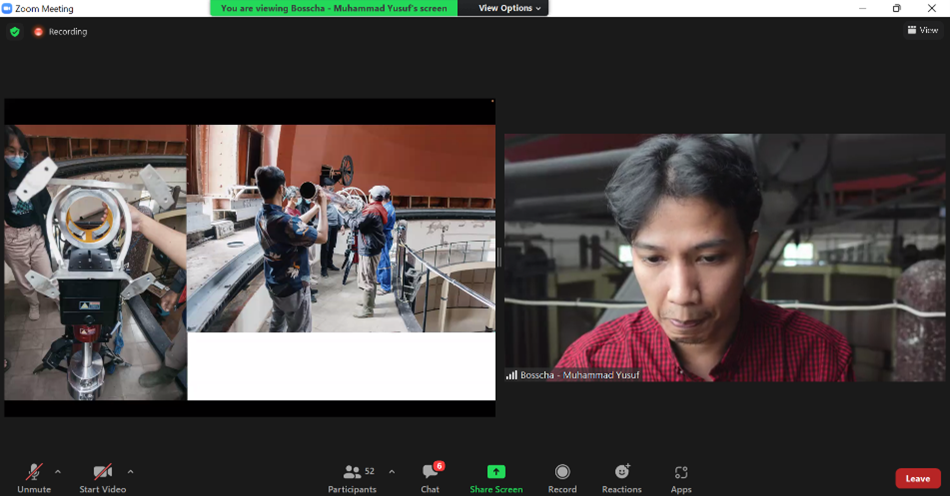Hilal Observation at Bosscha Observatory ITB with Digital Image Processing Technique
By Adi Permana
Editor Adi Permana

BANDUNG, itb.ac.id—The beginning of this month is a monumental time for Muslims, as it's a sign of the upcoming month of Ramadan. Institut Teknologi Bandung (ITB), other than being recognized for its innovations and technology, is also known for its research, one of which is in the astronomy field. Due to that, ITB routinely conducts observations of the young crescent moon almost every month.
Every year, Bosscha Observatory becomes one of the references for setting the beginning date of Ramadan and Shawwal for the Ministry of Religious Affairs and the general public.
Muhammad Yusuf, a researcher in Bosscha Observatory, stated that the observatory is tasked to convey the calculation, observation and study results regarding hilal to the government unit responsible if needed as input for the itsbat trial in Indonesia. The party responsible for deciding the beginning of Ramadan and Shawwal is the Republic of Indonesia’s government through a itsbat trial process.
In practice, the Bosscha Observatory Research Team carries these observations out with a digital image processing technique. Starting with photons from the Sun being reflected by the moon and caught by telescopes, these photons are then converted to electrons and then stacked. The image captured by the camera is then processed by an image processing device to increase the contrast of the crescent moon’s appearance.
The instruments used by Yusuf and his team consisted of:
1. Refractor telescope with focal length of 530 mm and diameter of 106 mm equipped with a CCD type camera detector.
2. Astronomy video camera with speed of 80 fps. 0.6 degree x 0.34 degree telescope and camera combination.
3. Dark red light 750 nm filter and observation of wideband wavelength with blue filter
4. Drive system with high accuracy and precision (order of accuracy 1 second of arc)
5. Baffle to eliminate light from sources other than the moon (p = 2m)
“We should be thankful to be living on Earth since we have celestial objects that can be used to measure time,” said Head of the Bandung Institute of Technology’s Bosscha Observatory Dr. Premana Wardayanti Premadi, Ph.D..

This crescent moon observation activity conducted by the Bosscha Observatory is aimed to examine the visibility function of the moon as a function of the elongation and thickness of the crescent moon, and also in the event of rukyatul hilal in the month of Ramadan 1443 H. Rukyatul hilal takes place during the evening and crescent moon detection takes place after sunset. The crescent that appears after sunset is known as ‘hilal’.
Several parameters in this crescent moon observation include time of conjunction, sunset, interval of sunset, moonset, the moon’s age, height, elongation, and illumination.

Yusuf also reveals some of the challenges the Bosscha research team had to go through during the hilal observation. Among those challenges was how the crescent moon’s very thin condition made it hard to be detected. The thickness of the crescent moon is the main factor in its detection, since the thicker it is would mean more light is reflected to the eyes, making it easier to detect and vice versa.
The second challenge was the low contrast due to atmospheric refraction which happens when celestial objects are situated around the horizon, and the third one was the weather (water vapor since we live in a tropical country), especially in the West Java region where the suitable time to observe hilal is from morning to noon, being constrained by weather conditions. The fourth challenge was the sun-earth-moon geometry because each month does not show the same configuration.
Reporter: Pravito Septadenova Dwi Ananta (Geological Engineering, 2019)
Translator: Hanna Daniela Ayu (Faculty of Mechanical and Aerospace Engineering, 2021)

.jpg)
.jpg)
.png)
.jpg)
.jpg)
